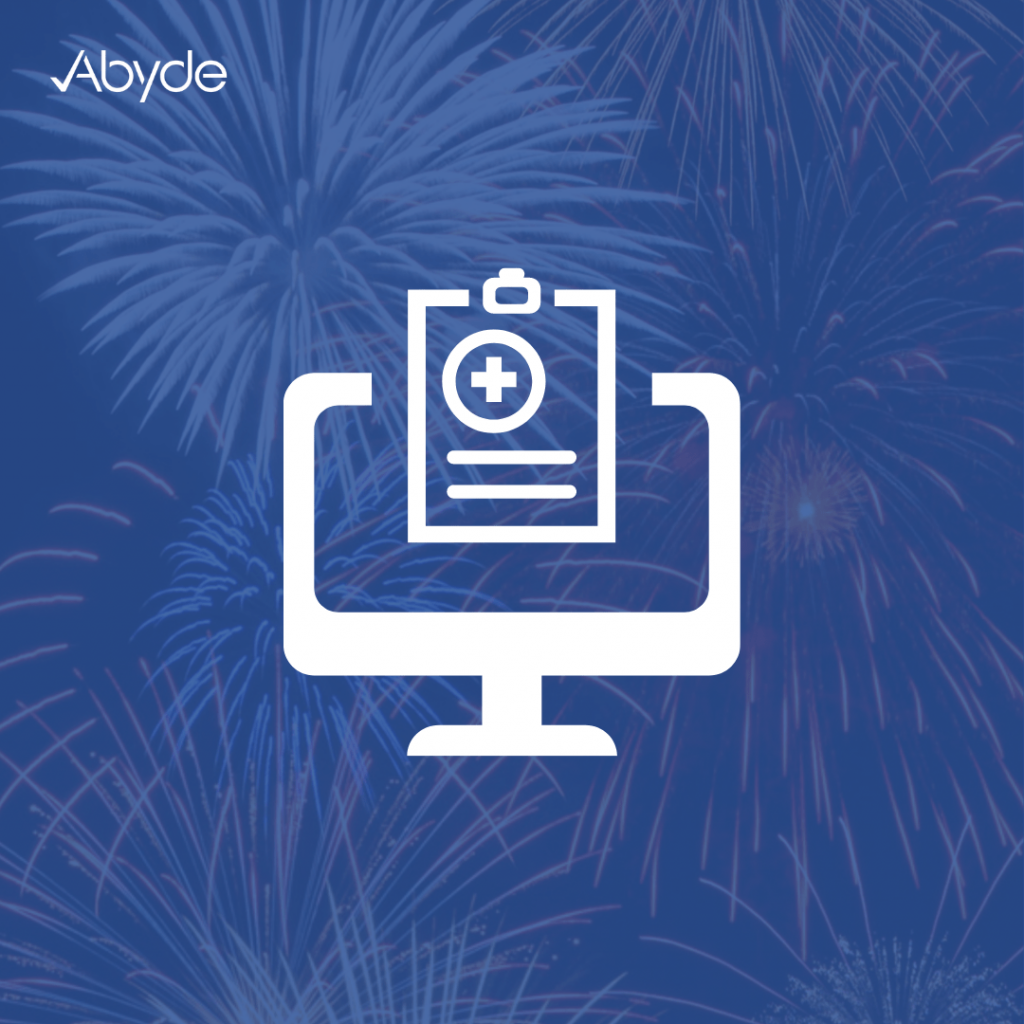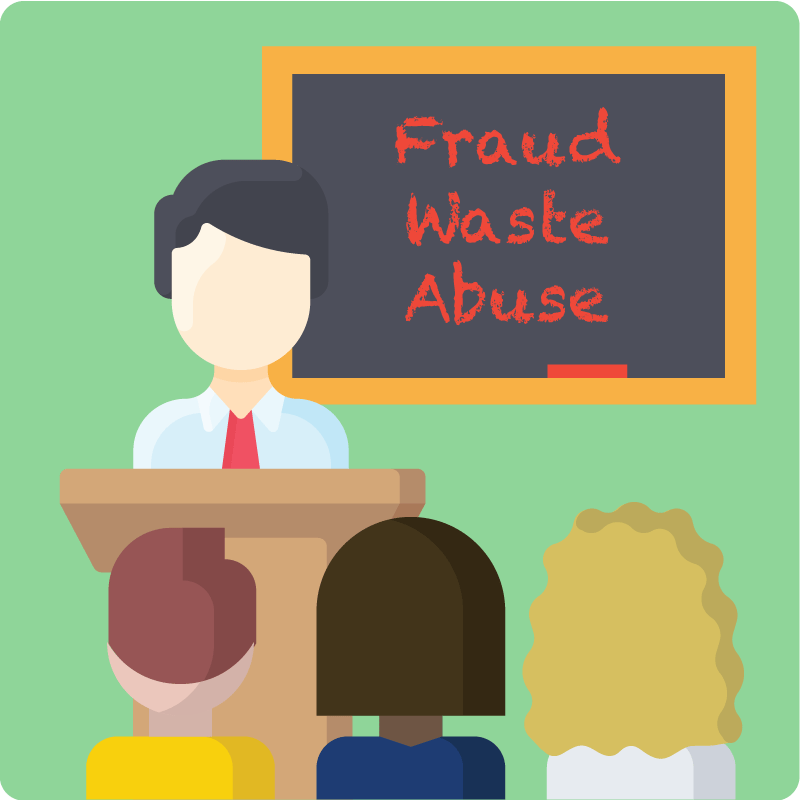July 12, 2023 In a world where data privacy is paramount, and breaches make headlines faster than the speed of light, there’s a heavyweight champion ruling the healthcare industry—HIPAA (Health Insurance Portability and Accountability Act). While its intentions to protect patient data are noble, we often overlook the less glamorous side of HIPAA: the significant financial burden it imposes on healthcare providers. What’s worse? The cost of noncompliance. 1. The H for “Hefty”: When it comes to the cost of HIPAA, the first letter of the acronym seems to stand for “Hefty.” Implementing the necessary administrative, technical, and physical safeguards to protect patient data can be a financial mountain to climb. From implementing secure IT systems to training staff and conducting regular audits, healthcare providers find themselves pouring precious resources into HIPAA compliance. 2. Compliance: The Ultimate Budget Sinkhole: While maintaining patient privacy is crucial, it’s no secret that HIPAA compliance can drain the pockets of even the most financially prepared institutions. Investing in updated technology, encryption, firewalls, and secure storage systems can cost an arm, a leg, and a few digits from your credit card pin. Suddenly, the “HIPAA” acronym takes on a new meaning: “Hazardously Intricate Price for Administrative Assurance.” 3. The Cost of the Inevitable “Oops”: Despite the best precautions, data breaches can still rear their ugly heads. The cost of mitigating the aftermath of a breach can send chills down the spines of healthcare providers. In addition to the financial implications, there’s the added toll on reputation, patient trust, and potential lawsuits. So, while HIPAA compliance can be expensive, the cost of non-compliance and its consequences is an even more bitter pill to swallow. 4. Training: The Education of Expensive Minds: To stay compliant with HIPAA regulations, healthcare providers must educate their staff on privacy policies and procedures. However, the cost of training programs, workshops, and seminars can feel like a merciless attack on your budget. With every mandatory training session, the price tag keeps growing. So, remember, when you’re shelling out for HIPAA compliance, you’re also investing in a future where your staff knows their way around patient privacy like a seasoned secret agent. 5. The Silver Lining of Investing in Privacy: While the cost of HIPAA compliance might seem overwhelming, it’s crucial to remember the underlying purpose of these regulations. HIPAA aims to protect patient data from falling into the wrong hands, ensuring their privacy and security. Ultimately, the investment in HIPAA compliance is an investment in patient trust, confidentiality, and the overall integrity of the healthcare industry. The cost of HIPAA compliance can indeed be a bitter pill to swallow for healthcare providers. From the financial burdens of implementing robust systems and training programs to the potential aftermath of data breaches, it’s a financial journey that requires careful navigation. However, it’s essential to view this investment as an opportunity to reinforce patient trust and safeguard sensitive information. So, while the price tag might be hefty, the benefits of HIPAA compliance far outweigh the cost. To alleviate the challenges and costs associated with HIPAA compliance, healthcare providers often seek the assistance of specialized compliance solutions. Abyde understands the complexities of HIPAA and offers a comprehensive suite of tools to simplify compliance processes. With our user-friendly platform, healthcare providers can navigate the intricacies of HIPAA regulations without breaking a sweat (or the bank). By leveraging Abyde’s services, practices can automate various compliance tasks, such as risk assessments, custom policy creation, employee training, and incident response. The Abyde all-in-one solution is designed to streamline the compliance journey, reducing the time and financial investments required. Practices can benefit from personalized support and up-to-date resources to stay ahead of the ever-evolving regulatory landscape. By partnering with a trusted compliance partner like Abyde, organizations can focus on delivering quality care while maintaining the highest standards of data privacy and security. Remember, when it comes to HIPAA, the price of privacy is priceless.
Balancing HIPAA and OSHA Compliance in Healthcare Practices
July 10, 2023 Compliance requirements can sometimes feel like a dance routine, and for healthcare practices, the choreography involves the overlapping steps of HIPAA and OSHA. Striking the right balance between protecting patient privacy and ensuring employee safety can be challenging but crucial. Here are some practical steps healthcare practices can take to navigate the convergence of HIPAA and OSHA compliance without drama or theatrics. Understanding HIPAA and OSHA: 1. HIPAA Compliance: HIPAA stands as the guardian of patient privacy and data security. It sets the standards for electronic transactions, privacy rules, and security measures. Healthcare providers, health plans, and clearinghouses are obligated to implement safeguards to protect sensitive health information. 2. OSHA Compliance: OSHA is responsible for maintaining a safe and healthy working environment for employees across all industries, including healthcare. It focuses on identifying workplace hazards, providing safety training, and ensuring proper record-keeping for occupational injuries and illnesses. Managing the Overlap: 1. Assess Risks: Begin by conducting a thorough risk assessment considering HIPAA and OSHA requirements. Identify potential areas where these compliance realms intersect, such as situations where employee safety might come into contact with patient information. 2. Develop Policies and Procedures: Craft policies and procedures that encompass both HIPAA and OSHA compliance. Ensure they address privacy, security, patient safety, employee training, and hazard prevention. Strive for clear and concise guidelines that are easily understood by staff. 3. Employee Education and Training: Educate and train your employees on both HIPAA and OSHA regulations. Empower them with the knowledge to protect patient privacy and maintain a safe workplace. Integrate training sessions that highlight the areas of overlap, emphasizing the importance of handling sensitive data in a secure manner. 4. Safeguarding Patient Privacy: Implement measures to protect patient privacy while maintaining a safe work environment. Establish designated areas for confidential discussions and restrict access to authorized personnel only. Remember, the aim is to achieve a balance that safeguards patient information without compromising employee safety. 5. Workplace Safety: Regularly assess the physical environment for potential hazards and implement protocols to address them promptly. Focus on proper storage and disposal of hazardous materials, ergonomics, and infection control practices. Encourage a safety culture that promotes vigilance and preventative measures. 6. Incident Reporting and Documentation: Establish a streamlined process for reporting incidents that may involve both patient information and employee safety. Emphasize the importance of accurate documentation while maintaining patient confidentiality. Clear reporting procedures help identify areas for improvement and drive proactive safety measures. 7. IT Security: Maintain robust IT security measures to protect electronic patient health records from unauthorized access or breaches. Stay vigilant with software updates, conduct regular risk assessments, and educate employees on best practices for data security and privacy. 8. Compliance Audits and Monitoring: Regularly conduct compliance audits to ensure adherence to both HIPAA and OSHA requirements. Monitor compliance, review incident reports, and identify areas that need improvement. Assign designated staff members to oversee compliance efforts and keep the focus on continuous improvement. Finding a rhythm between HIPAA and OSHA compliance is essential for healthcare practices striving to protect patient privacy while maintaining a safe working environment. By assessing risks, developing comprehensive policies, and providing education and training, healthcare organizations can achieve the delicate balance required. Compliance doesn’t need to be a stressful rehearsal for things to go wrong. It’s a practical endeavor that protects both patients and employees alike. At Abyde, we strive for a harmonious dance where patient privacy and workplace safety are the show’s stars. Our revolutionary software bundles HIPAA & OSHA compliance for healthcare, making the balancing act of compliance easy for practices.
Sparkling HIPAA Compliance: Igniting a Secure Healthcare Future
June 27, 2023 Do you ever feel like a plastic bag? Drifting through the wind…..not knowing how to handle HIPAA compliance for your small to midsize practice…? Well then you’re in the right place! You just gotta ignite the light…with Abyde to make your practice shine in HIPAA compliance. In the same way that Independence Day wouldn’t be complete without a spectacular firework display, the healthcare sector wouldn’t be complete without its own showstopper: Abyde’s HIPAA compliance software. While the connection between The Health Insurance Portability and Accountability Act (HIPAA) compliance and fireworks might seem like a stretch, when you consider the meticulous orchestration and impressive outcomes of both, the comparison starts to make sense. This connection isn’t just a cheap grab at holiday enthusiasm. It’s the Fourth of July for your patient data security. Getting Started with Compliance Like any grand firework show, the journey to HIPAA compliance starts with a spark, an understanding that the protection of patient data is a top priority. HIPAA compliance software is your match, ready to ignite the process. From there, it’s all about the careful handling and methodical planning to ensure this spark doesn’t turn into an uncontrollable blaze. Grasping HIPAA Regulations The path to becoming HIPAA compliant is like a firework’s upward trajectory: a careful climb towards the ultimate goal. This path is lined with understanding and implementing the various regulations, such as the Privacy Rule, Security Rule, Breach Notification Rule, and Enforcement Rule. Each rule is a step in the journey, each a single firework in your overall display. Achieving Compliance When a firework reaches its peak and explodes into a stunning array of color, that’s when the magic happens. Achieving HIPAA compliance is your practice’s moment to shine, the culmination of hard work and dedication. With the help of a robust compliance software solution like Abyde, this moment isn’t just a one-time event, but an ongoing performance, highlighted by routine risk assessments, audits, staff training, and more. Upholding Compliance After the last firework has faded, the work isn’t over. There’s clean-up to do and plans to make for the next display. Similarly, HIPAA compliance isn’t a one-and-done deal. Maintaining compliance is just as important as achieving it, requiring a continuous commitment to data security and regular reassessment of protocols. So, as we enjoy our summer barbecues and fireworks, let’s appreciate HIPAA compliance software like Abyde’s that helps healthcare providers put on their own show, protecting patient data and upholding industry standards. Just as fireworks add sparkle to a night sky, Abyde adds a layer of security and trust to our healthcare interactions.
Beat the Heat & Cool Off With Compliance
June 14, 2023 As summer rolls around, it’s not just the season that’s changing. In the world of healthcare, compliance is a continually evolving landscape, with regulations like the Health Insurance Portability and Accountability Act (HIPAA) and the Occupational Safety and Health Act (OSHA) often seeing updates. As the days get longer and the temperature rises, it’s the perfect time to perform a summer refresh on your HIPAA and OSHA compliance. Take a HIPAA heat check! HIPAA was passed to ensure the confidentiality and security of healthcare information. HIPAA compliance can be considered a sunscreen – it protects sensitive patient health information from getting ‘burned’ or leaked. Just like you apply and reapply sunscreen to ensure ongoing protection, it’s essential for practices to assess and periodically reassess HIPAA compliance strategy. With ever-advancing technology that provides more avenues for patients and providers to communicate and share information, the need for HIPAA compliance increases. Any application or platform that handles Protected Health Information (PHI) must be HIPAA compliant to ensure the confidentiality and integrity of such information. This summer, review digital systems and practices to protect patients’ sensitive data as carefully as you would protect your skin. If HIPAA compliance needs sunscreen, Abyde is SPF 100! Did you know if you put a seashell up to your ear, you can hear the OSHA? OSHA creates and enforces regulations to maintain safe and healthy working conditions. Just like a lifeguard oversees the beach’s safety, OSHA watches over your practice’s safety environment and regulations. As the summer’s heat rises, OSHA reminds us to ensure safe and healthy conditions for our workers, taking adequate measures against heat-related illnesses, overexposure to the sun, or other safety risks related to the summer season. Don’t let your practice have a double-red out this summer. Maintaining compliance isn’t a one-and-done task but a continuous process, much like the seasons that come and go. You always prepare to protect yourself from the sun and heat. Why not do the same for your practice and patients? Abyde beats the heat on HIPAA and OSHA compliance so you can sit back, relax, and enjoy a culture of compliance that’s as unending as the summer sun.
A Culture of Compliance – Your Get Out of Jail Free Card
April 18, 2023 Everyone wishes for the “Get Out of Jail Free” card in the game of Monopoly, so you can sell it and make money or free yourself from the slammer and continue your quest for wealth. But don’t you wish you had a card like this in real life so you could avoid paying a late fee, get out of an awkward situation, or get out of a speeding ticket? Imagine handing a police officer the card with your license and registration, I bet you would get a good chuckle! When it comes to healthcare compliance, demonstrating “good faith” could provide you with that much-needed “Get Out of Jail Free” card if you are investigated, audited, or are facing a violation. “Good faith” generally means that you have made a sincere and honest effort to comply with applicable laws, regulations, or standards pertaining to HIPAA and OSHA. So what do regulators look for when determining whether or not a practice has demonstrated “good faith”? First, you have implemented policies and procedures to include applicable forms or required logs. Next, staff has been trained in accordance with HIPAA and OSHA timeframes and requirements. And most importantly, whether or not you have completed a HIPAA Security Risk Analysis and OSHA Facility Risk Assessment that have identified risks, hazards, and mitigation efforts. While regulators may consider other factors, implementing a documented compliance program suggests you are committed to compliance and taking reasonable steps to protect your patients’ PHI and provide a safe and healthy workplace for staff. It is important to keep in mind “good faith” does not guarantee immunity from regulators. Every situation will have different mitigating factors, such as malicious intent or an identified hazard that went unmitigated. While you may be promoting a culture of compliance, ignoring the blatantly obvious could lead to you losing that “Get Out of Jail Free” card. Okay, how can you win at the HIPAA and OSHA compliance game? While it may be difficult to achieve compliance perfection, having a documented culture of compliance and, even more importantly, not letting your compliance program lapse will be key. These moves will show your “good faith” effort towards safeguarding patient information and employee safety and might even earn you the jackpot or a luxury Dark Blue property (IYKYK).
All Hands In For the OSHA Safety and Health Committee
October 21, 2022 Book clubs are cool. Fantasy football leagues deserve their moment. But do you know what the elite of all groups and clubs is? For us, it’s an OSHA safety committee. The US Department of Labor says, “the safety and health committee is an integral part of the safety and health program, and helps ensure effective implementation of the program at the establishment level.” We know firsthand that a group is always better together. So what does a safety and health committee even do? The committee helps improve the organization’s understanding of workplace safety and encourages co-workers to follow best practices in order to prevent workplace injury and illness. Additionally, they review current safety programs and recommend changes, as needed, to all safety and health procedures. Think of this committee as a soundboard for employees to voice their concerns and recommendations. Although practices cannot always prevent injuries or illnesses, implementing a safety committee is a significant step to help lower injury and illness rates. And we all know, lower rates equate to happier employees. The safety and health committee should meet regularly (we recommend a monthly cadence – quarterly at a minimum) and bring its findings to the OSO (OSHA Safety Officer). And because we like to give advice away for free ninety-nine, here are a few ideas to get you started: Maintaining safety and health is very important, to say the least. And if the US Department of Labor hasn’t given you any indication of that, this is not a solo job. Now let’s get all hands in because it is everyone’s responsibility to ensure a safe work environment. On three… LET’S GO OSHA! Want more on state specifics guidance? Give us a call to discuss industry guidelines.
Internal Communication Dos and Don’ts
October 6, 2022 Have you ever accidentally sent a text to the wrong person? Most of us have and it likely made your heart skip a beat! Now, imagine sending a text and thousands of patients’ health information gets leaked. Talk about a gut-wrenching moment! Speaking of leaks, did you know that over 1.14 million people have been impacted by a protected health information (PHI) breach just last month alone? The leaked data includes names, social security numbers, phone numbers, email addresses, and more. That’s 7% higher than last September! Internal communications are an efficient means of sharing and exchanging information within the practice. Employees communicate internally through channels like SMS, email, phone calls, and other means through the use of a third-party platform like Slack, Microsoft Teams, Zoom, and Cisco Webex. And while oftentimes we like the thought of quick and easy, it’s crucial to take that extra minute or two and double check that you are using a secure provider for all internal communication. First things first, if you haven’t already done so, take this as your sign to reach out to your communications provider and ask if they are HIPAA compliant. Many times, companies will have this information available on their website as well. Keep in mind that some providers, like Google and Microsoft, offer HIPAA compliant services in an upgraded package. If you are not using a secure platform, or you are unsure, then you should not be discussing ANY patient information through that method of communication (yes, that includes names!). If you are using a secure, HIPAA compliant provider or application for internal communication, great! The next very important step is to double check that you have a signed Business Associate Agreement. You may also be wondering about SMS/ text messaging within your organization. Staff members should not be texting each other with information related to patients, even if it is related to scheduling. Keep all work-related communication through your secure provider or application. Quick reminder! Just because you are communicating internally through a secure provider does not in fact mean you are compliant. You’ll also need to implement security policies and procedures in order to follow best practices. These policies and procedures should include: It is highly recommended that you consult with your IT professional for best practices on securing all applications in your practice. Lastly, It’s important to remember that HIPAA is not a barrier law and, in fact, is intended to help you share protected health information securely and efficiently. Being efficient within your practice can help the overall health of your patients and your organization. Having these best practices in place will help you and your team avoid the anxiety of sharing something that shouldn’t be shared.
Is Fraud, Waste and Abuse Training Required For My Practice?
August 27, 2021 It’s understandable for healthcare organizations to sometimes feel drowned by responsibilities. In addition to the ongoing balance of patient care and running a business that you’re already tasked with, having to add compliance into the mix can make for some especially muddy waters to tread. However, the compliance struggle is more than just having yet another thing added to your list. It is all of the complexity and confusion that surrounds it. And since the word “compliance” consists of many different legal, ethical and professional standards – it’s not always easy to decipher which items are a must-have to keep your practice afloat. So when it comes to the responsibilities of your practice, though providing quality healthcare and protecting your patients is always a must, not all organizations have to follow the same requirements. Because of this, one question in particular that seems to leave practices scratching their head is, “Are we responsible for providing fraud, waste, and abuse training to employees?” What is fraud, waste and abuse training? If you are familiar with fraud, waste and abuse (FWA) you most likely understand the impact it has on the healthcare industry and why it’s so important to prevent. All employees within a healthcare organization should know what FWA is and how to avoid it, the same as they should know what HIPAA is and how to protect patient health information. However, while annual HIPAA training is a legal requirement with specific stipulations for compliance – the rules are a bit different when it comes to the education for FWA. Previously, the Centers for Medicare and Medicaid Services (CMS) required both Medicare Part C (Medicare Advantage) and Part D (Prescription Drug Coverage) plans along with all participating healthcare organizations to meet the annual fraud, waste and abuse training requirement. Training was to be provided to all employees within the first 90-days of onboarding and on an annual basis thereafter. The goal being to clearly identify what fraud, waste and abuse is and ensure all health plan providers and their “downstream, related entities” (a.k.a. healthcare organizations like you) have the know-how to properly detect, correct, report and ultimately prevent instances of FWA. Now if you’re already meeting HIPAA training requirements (fingers-crossed that you are) the stipulations for FWA training probably seem straightforward enough. However in typical government fashion, with legislation comes continual changes and as of January 1, 2019, the CMS officially updated the standard to only apply to Medicare service providers – not Medicaid – based on the feedback they received regarding the burden of the requirement. But before all the non-Medicare providers who are currently reading go to click the “x” at the top of this page, there are other specific insurance plans that may require their covered entity providers to complete some type of healthcare fraud training. One thing to keep in mind is even if your organization doesn’t fall into these parameters, providing FWA education for all employees is certainly beneficial. So in getting back to that commonly asked question – the requirements for offering fraud, waste and abuse training really just depend on the healthcare plan that your organization provides. Luckily, finding answers can be a simple process as most plans provide their specific standards for not only training but general FWA compliance online. Additionally, there is the CMS’s online resource that’s free to the public. In summary, including fraud, waste and abuse education as a part of your staff compliance training doesn’t have to be complicated. And with the costly impact that FWA and noncompliance can have on your organization, providing this training (even if you aren’t required) can make all the difference in keeping your practice’s head above water and avoiding a violation or fine that could otherwise put you under.
Fraud, Waste, and Abuse in Healthcare
August 6, 2021 Fraud, waste, and abuse are three little words that have impacted the rising cost of healthcare in a way that’s anything but little. Now, most are probably aware that U.S. health expenditures are growing at a rapid rate, and have been for many years. And while there are many reasons that resulted in the healthcare industry closing out 2020 with a whopping $3.8 trillion tab – ‘fraud’ is a five-letter word that can account for about $60 billion of it. So with an issue this common and costly, how can patients and providers help to stop it? What is it? Now, you’ve probably heard of fraud, waste, and abuse before and can associate each of them with nothing but bad news but what exactly do they mean to healthcare specifically? Who can commit fraud? The answer to this question is pretty much anyone. This includes doctors, patients, billing services…you name it. That being said, as a healthcare provider – it’s your job to not only ensure that you aren’t partaking in any fraudulent activities but are also on the lookout for your staff, patients, and billing providers. How do I prevent it? As a provider, it’s important to develop appropriate prevention policies for your organization that outline best practices for avoiding and detecting healthcare fraud, waste, and abuse. According to the HHS Office of the Inspector General, this program should “establish a culture within an organization that promotes prevention, detection, and resolution of instances of conduct that do not conform to Federal and State law, and Federal, State and private payer healthcare program requirements, as well as the organizations’ ethical and business policies,” and include some of the following components: In helping to reduce and ultimately prevent fraud and abuse, it’s important for your organization to not only have the proper compliance programs in place but also take additional measures such as: With billions of dollars lost each year to health care fraud in the U.S., and the costly impact an investigation could have on your organization’s reputation and revenue – it’s important to have the processes in place to detect and prevent fraud and abuse. Ensuring that your practice is meeting all areas of healthcare compliance, including a complete HIPAA program, is essential to keeping up with government standards and best protecting your patients. So while the rising cost of healthcare might not be totally avoidable, having the right compliance programs in place mean that the expense of a HIPAA or fraud violation can be. And with the penalties ranging from fines of hundreds of thousands of dollars and some even resulting in jail time – proactively preventing incidents before they happen and ensuring complete compliance is priceless.








